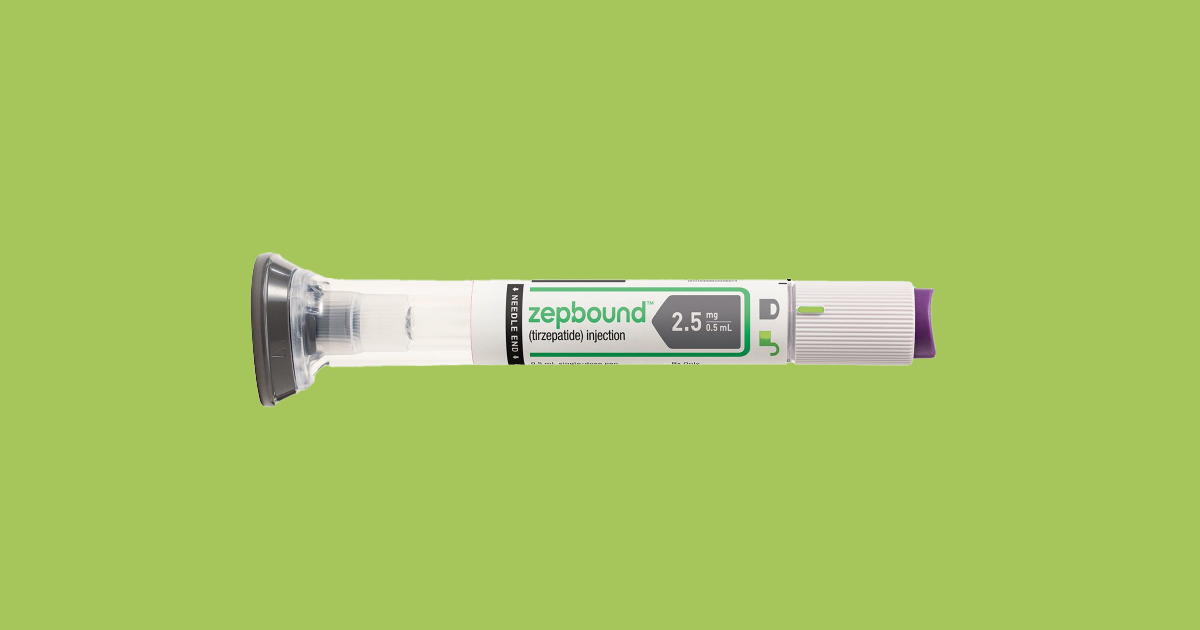The recent FDA approval of Zepbound (tirzepatide), produced by Eli Lilly, marks a groundbreaking advancement in the management of moderate-to-severe obstructive sleep apnea (OSA) among adults with obesity. The announcement on December 20 signifies a pivotal moment in the landscape of sleep medicine, as it expands treatment options for patients suffering from OSA. Notably, the FDA emphasizes the importance of combining Zepbound with a reduced-calorie diet and increased physical activity to maximize its effectiveness.
Significance of FDA Approval
Sally Seymour, M.D., director of the Division of Pulmonology, Allergy and Critical Care at the FDA, underscored the significance of this landmark decision, noting that it introduces the first drug treatment option for certain patients with OSA. This approval not only brings hope to millions affected by sleep apnea but also reinforces the FDA’s commitment to enhancing treatment avenues for chronic health conditions that severely impact quality of life. By paving the way for new prescription medications like Zepbound, the FDA is addressing a critical need in the healthcare system and providing patients with effective tools to combat their sleep disorders.
First Medication for Obstructive Sleep Apnea
Zepbound is the first medication approved specifically for the treatment of obstructive sleep apnea, leading to potentially dangerous pauses in breathing. Prior to this groundbreaking approval, treatment options were largely limited to lifestyle modifications and mechanical devices, such as continuous positive airway pressure (CPAP) machines. Many patients struggle with adherence to these traditional therapies, making Zepbound a welcome and necessary addition to the array of treatment choices available to patients with obstructive sleep apnea.
Understanding Obstructive Sleep Apnea
OSA is a prevalent sleep disorder characterized by repeated interruptions in breathing due to the blockage of the upper airway during sleep. This condition often afflicts adults with obesity, as excess body weight can exacerbate airway obstruction. Individuals suffering from OSA experience fragmented sleep cycles, which can lead to decreased oxygen levels in the blood, resulting in numerous health complications if the condition remains untreated. Typical manifestations include loud snoring, choking, or gasping for air, which not only disrupts the sleep of the affected individual but may also disturb their partner’s rest. Left unaddressed, OSA can significantly impair daily functioning, affecting both cognitive performance and overall quality of life, necessitating effective management strategies.
Symptoms and Diagnosis
Common symptoms of OSA include excessive daytime sleepiness, loud snoring, and episodes of breathing cessation during sleep, which can be alarming both for the individual and their sleeping partner. Difficulty concentrating and heightened fatigue are also prevalent, significantly impacting productivity. Diagnosis of moderate to severe obstructive sleep apnea typically involves a comprehensive sleep study, which can be performed either in a specialized sleep clinic or at home, to track breathing patterns and oxygen saturation levels. The Apnea-Hypopnea Index (AHI) is crucial in classifying the severity of OSA, providing a metric that helps healthcare providers evaluate the frequency of apnea events. Early diagnosis and timely intervention are essential to mitigate the serious health risks associated with untreated obstructive sleep apnea.
Impact on Adults with Obesity
The relationship between obstructive sleep apnea and obesity is particularly concerning, as studies reveal that excess body weight can intensify the severity of OSA. For adults grappling with obesity, the coexistence of obstructive sleep apnea introduces a multitude of health challenges, increasing the risk of serious conditions such as cardiovascular diseases, diabetes, and metabolic syndrome. This interplay creates a vicious cycle, where the challenges posed by OSA complicate weight loss efforts and overall health management. Consequently, addressing both the obstructive sleep apnea and obesity is paramount for improving health outcomes. By implementing targeted treatment strategies, including the recent approval of medications like Zepbound, patients can enhance their quality of life and health status, breaking the cycle of obesity and sleep disorders.
Tirzepatide: The Active Ingredient
Mechanism of Action
Zepbound contains tirzepatide, which functions by activating receptors of hormones secreted from the intestine, specifically GLP-1 and GIP. This innovative mechanism aids in reducing appetite and food intake, making tirzepatide an effective agent for weight management in adults with obesity. By promoting significant weight loss, tirzepatide indirectly contributes to the reduction of obstructive sleep apnea (OSA) symptoms, as decreased body weight can lead to improved airway function and fewer apnea events. The dual action of addressing both obesity and sleep apnea makes tirzepatide a unique therapeutic option in the realm of sleep medicine. As patients take Zepbound, they may experience not only weight reduction but also enhanced sleep quality, emphasizing the importance of this medication in managing moderate to severe obstructive sleep apnea.
Benefits of Tirzepatide
Clinical studies have shown that tirzepatide significantly reduces body weight in patients, correlating with improvements in obstructive sleep apnea symptoms. Participants treated with Zepbound reported statistically significant reductions in apnea or hypopnea events over a 52-week period. Many patients experienced complete remission or resolution of their sleep apnea symptoms, highlighting the potential of tirzepatide as a transformative treatment for those battling both obesity and OSA. The medication’s ability to facilitate weight loss while directly targeting sleep apnea symptoms distinguishes it from traditional treatment options, which often focus solely on managing the symptoms without addressing underlying causes. By integrating tirzepatide into treatment regimens, healthcare providers can offer patients a promising avenue towards better health outcomes and improved quality of life.
Comparison with Other Treatments
While positive airway pressure (PAP) therapy remains the most common and effective treatment for obstructive sleep apnea, adherence rates can be disappointingly low among patients, often falling below 50%. Zepbound presents an alternative for individuals who struggle with traditional therapies, particularly those who are obese. Unlike PAP devices, which can be cumbersome and uncomfortable, Zepbound offers a pharmacological approach that may enhance adherence to treatment. The weight loss effects of tirzepatide can lead to improved airway function and better overall outcomes for patients suffering from moderate to severe obstructive sleep apnea. This makes Zepbound a valuable adjunctive treatment option, positioning it as an essential part of a comprehensive strategy to address both the symptoms of OSA and the challenges associated with obesity.
Clinical Implications of Zepbound
Treatment for Moderate-to-Severe Obstructive Sleep Apnea
Zepbound is specifically indicated for adults suffering from moderate to severe obstructive sleep apnea (OSA), particularly those with obesity. The FDA’s approval signifies a new era in the management of this condition, providing healthcare providers with a pharmacological tool to address both weight and sleep apnea simultaneously. By incorporating Zepbound into treatment plans, healthcare professionals may enhance patient outcomes, particularly since this medication targets the underlying obesity that often exacerbates sleep apnea symptoms. This dual-focus approach is crucial for managing the complexities of OSA in obese patients, as effective treatment can lead to improved airway function, reduced apnea events, and enhanced overall health. Moreover, the integration of Zepbound within a comprehensive strategy that includes a reduced-calorie diet and increased physical activity could further optimize treatment efficacy and promote sustainable weight loss alongside alleviating the symptoms of obstructive sleep apnea.
Effect on Apnea-Hypopnea Index
Clinical trials have demonstrated that treatment with Zepbound results in a clinically meaningful reduction in the Apnea-Hypopnea Index (AHI), a key metric that measures the severity of obstructive sleep apnea based on the frequency of apnea and hypopnea events. Participants in these studies showed significant improvements in their AHI scores, indicating a substantial reduction in the number of breathing interruptions during sleep. Such reductions are critical for enhancing sleep quality, as lower AHI scores correlate with fewer health complications and improved daytime functioning. The ability of Zepbound to effectively lower AHI not only addresses the immediate concerns of obstructive sleep apnea but also contributes to long-term health benefits, potentially decreasing the risk of comorbidities associated with untreated OSA. Consequently, the positive impact on the AHI underscores the importance of this medication as a viable treatment option for adults facing moderate-to-severe obstructive sleep apnea.
Potential Side Effects and Considerations
While Zepbound presents promising benefits for patients with obstructive sleep apnea and obesity, it is essential to consider the potential side effects associated with its use. Common adverse reactions reported include nausea, diarrhea, vomiting, constipation, and stomach discomfort, which may detract from the overall treatment experience. Additionally, patients may encounter injection site reactions, fatigue, allergic reactions, and gastrointestinal issues, such as gastroesophageal reflux disease. Notably, Zepbound has been linked to thyroid C-cell tumors in rats, raising questions about its long-term implications for human patients. The FDA advises that individuals with a personal or family history of medullary thyroid cancer or multiple endocrine neoplasia syndrome type 2 avoid this medication. Given these risks, it is vital for patients to engage in thorough discussions with healthcare providers to assess the benefits and manage any potential side effects effectively, ensuring a well-rounded approach to treating obstructive sleep apnea.
Partner with NY Allergy & Sinus Centers for Sleep Apnea Care
At NY Allergy & Sinus Centers, we specialize in diagnosing and managing OSA using a comprehensive, patient-focused approach. Our expert team understands the complexities of sleep apnea and its connection to obesity and other health conditions.
Take the first step toward better sleep and improved quality of life. Contact NY Allergy & Sinus Centers to schedule your consultation today and let us help you breathe easier and live better.

